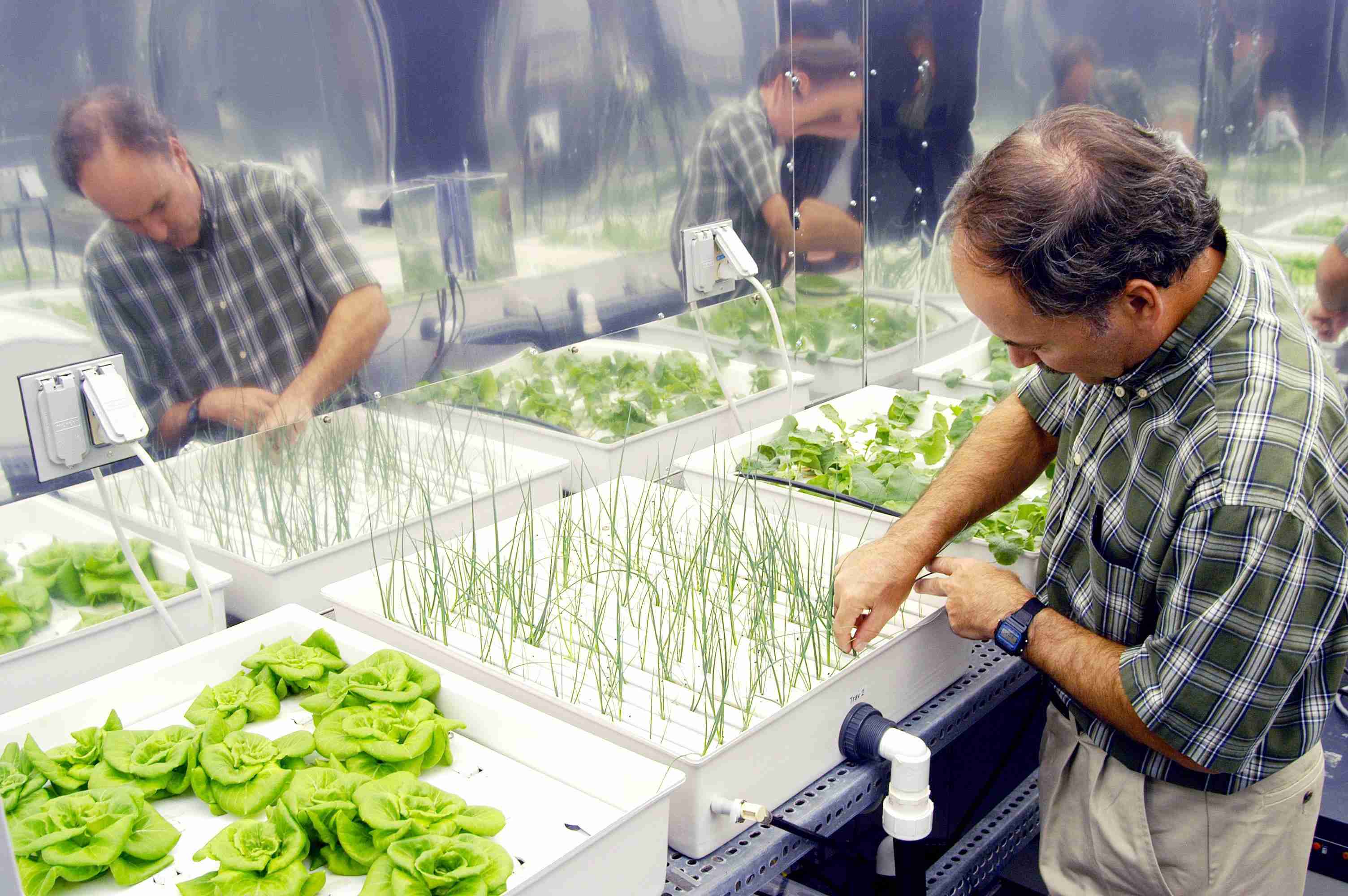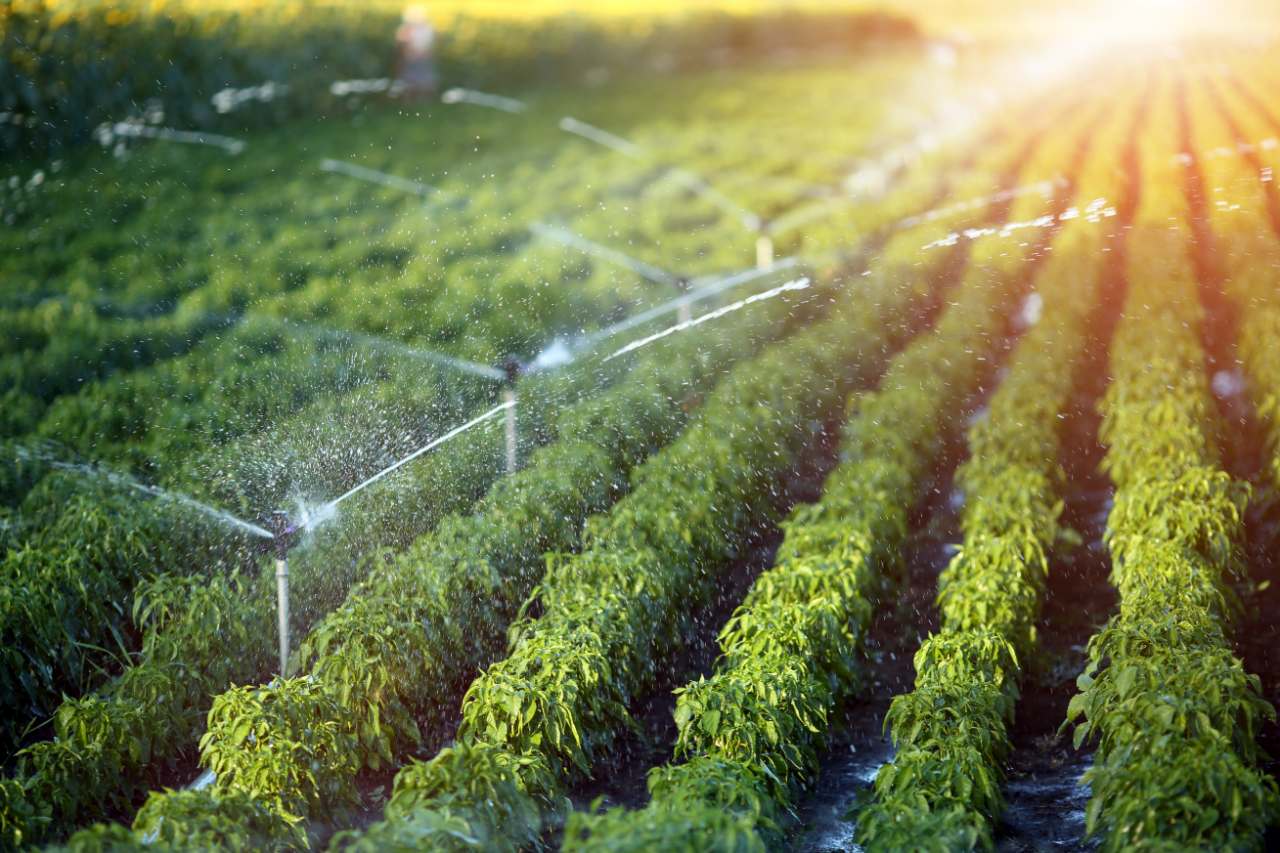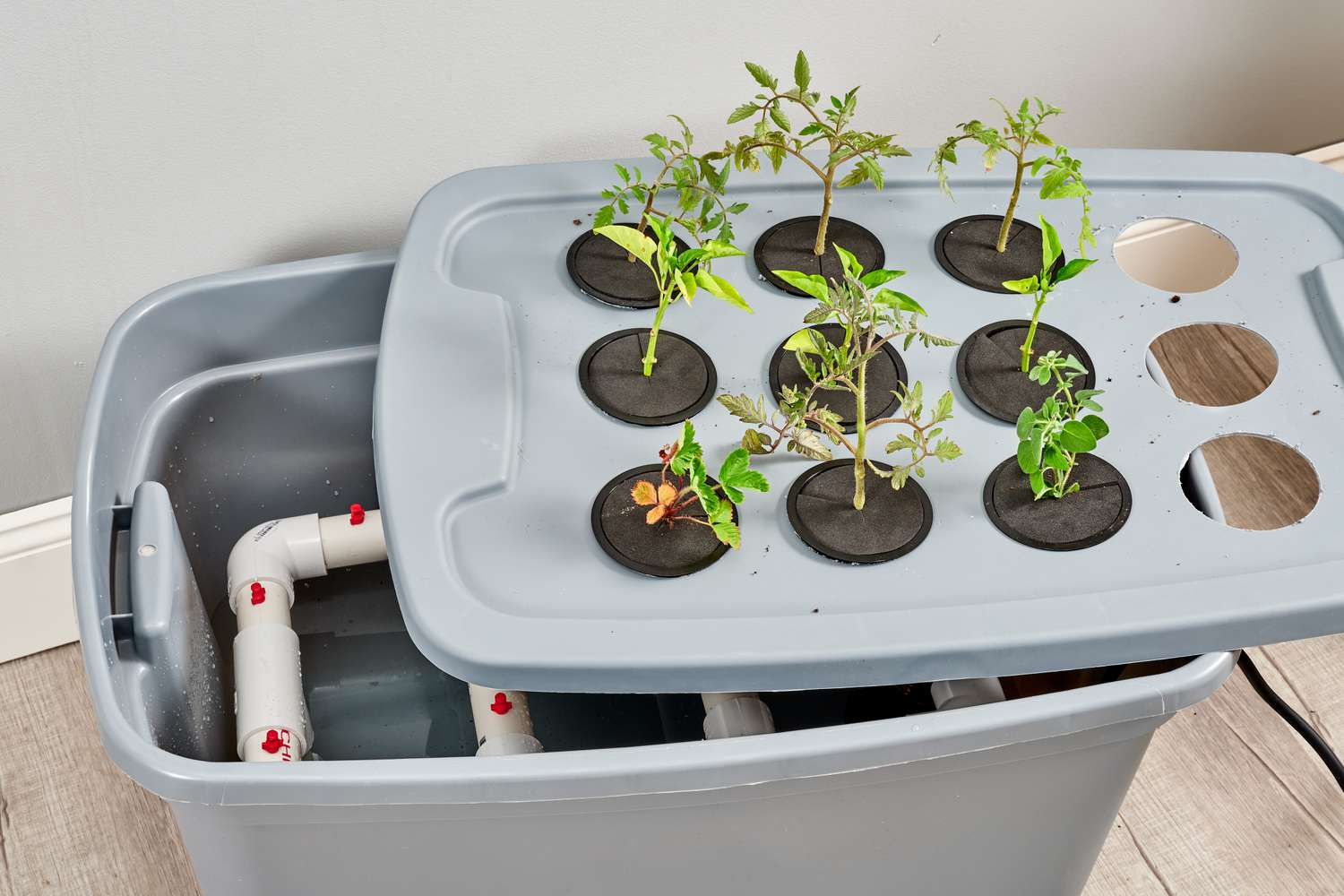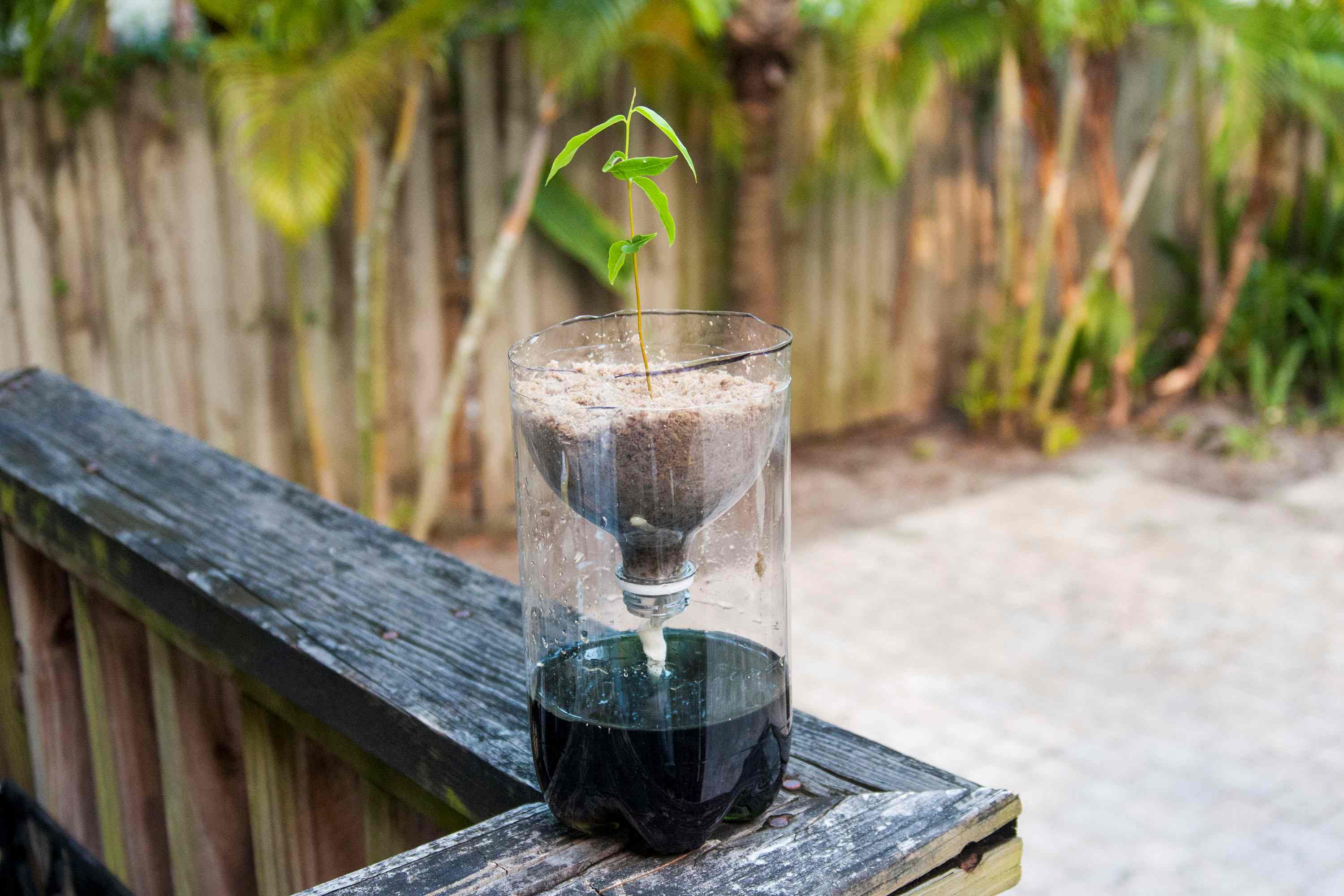Home>Gardening News and Trends>Latest News>What Are The Different Types Of Hydroponics Systems


Latest News
What Are The Different Types Of Hydroponics Systems
Modified: February 10, 2024
Discover the latest news on hydroponics systems and explore the various types, including nutrient film technique, deep water culture, and more. Stay informed and start growing today!
(Many of the links in this article redirect to a specific reviewed product. Your purchase of these products through affiliate links helps to generate commission for Chicagolandgardening.com, at no extra cost. Learn more)
Table of Contents
Introduction
Hydroponics is an innovative method of growing plants without soil, where nutrient-rich water is used to deliver the necessary elements directly to the plant roots. This technique has gained popularity in recent years due to its numerous benefits, such as increased crop yield, water efficiency, and the ability to grow plants in limited space.
In hydroponics, different systems are used to deliver the nutrient solution to the plants, each with its own unique features and advantages. Understanding the different types of hydroponics systems can help you choose the most suitable one for your specific needs and plants.
In this article, we will explore various types of hydroponics systems and their key characteristics. Whether you’re a beginner or an experienced grower, this guide will provide you with valuable insights into the different methods of hydroponics cultivation.
Let’s dive into the world of hydroponics systems and discover the possibilities they offer for year-round gardening.
Nutrient Film Technique (NFT)
The Nutrient Film Technique (NFT) is a popular hydroponic system characterized by a thin film of nutrient solution flowing continuously over the roots of the plants. It utilizes a sloping surface or a series of channels to provide a constant flow of nutrients.
In an NFT system, plants are placed in small containers or net pots with their roots exposed to the continuous flowing nutrient film. The nutrient solution, enriched with essential minerals, is pumped from a reservoir and circulated through the channels, creating a thin film that bathes the roots.
The key advantage of the NFT system is its efficient use of water and nutrients. The shallow film allows for efficient oxygenation of the roots while minimizing water usage. Additionally, the constant flow of nutrients prevents nutrient stagnation and ensures adequate supply to the plants.
The NFT system is particularly suitable for fast-growing plants with short growth cycles, such as lettuce, herbs, and certain varieties of strawberries. It is also ideal for plants that prefer a well-aerated root zone.
One important aspect to consider when using the NFT system is the management of the nutrient solution flow. The slope of the channels should be carefully adjusted to ensure an even distribution of the nutrient film across all the plants. Regular monitoring and adjustment of the nutrient solution’s pH and nutrient levels are also vital to maintain optimal plant growth.
Overall, the Nutrient Film Technique is a versatile hydroponic system that allows for efficient nutrient delivery and oxygenation of plant roots. Its simplicity, water efficiency, and suitability for fast-growing crops make it a popular choice for both amateur and professional hydroponic growers.
Deep Water Culture (DWC)
Deep Water Culture (DWC) is a hydroponic system that involves suspending plant roots in a nutrient-rich solution. Unlike other hydroponic systems where the roots are partially immersed in the nutrient solution, DWC requires the roots to be fully submerged.
In a DWC system, plants are placed in containers, typically made of net pots, which are suspended above a reservoir filled with the nutrient solution. An air pump or air stone is used to oxygenate the solution, providing the roots with the necessary oxygen for respiration.
The main advantage of the DWC system is its simplicity and ease of setup. It requires minimal equipment and can be easily assembled and maintained, making it suitable for beginners in hydroponics. Additionally, the continuous exposure to oxygen-rich water promotes robust root development and accelerated plant growth.
One of the key considerations when using the DWC system is maintaining the proper nutrient solution levels. The roots need to be constantly submerged in the solution to ensure proper nutrient uptake, while also preventing them from becoming waterlogged. Regular monitoring of the solution’s pH and nutrient levels is crucial to avoid imbalances that could affect plant health.
Deep Water Culture is commonly used for growing large, leafy plants such as lettuce, spinach, and basil. It is also suitable for plants with longer growth cycles, as the constant access to nutrients and oxygen supports sustained growth and development.
Overall, the DWC system is a cost-effective and efficient method of hydroponic cultivation. It offers simplicity, rapid growth rates, and high nutrient uptake, making it a popular choice among hydroponic enthusiasts.
Drip System
The drip system, also known as the drip irrigation system, is a widely used hydroponic technique that delivers a controlled amount of nutrient solution directly to the plant’s roots. In this system, a network of tubes with small emitters or drippers is used to supply water and nutrients to each plant individually.
In a drip system, the nutrient solution is stored in a reservoir and pumped to the plants through a main supply line. From the main line, smaller tubes with drip emitters are connected to deliver the solution to the base of each plant. The drippers release the solution in a slow and consistent manner, ensuring that the plants receive a uniform amount of water and nutrients.
The drip system offers several advantages, including reduced water and nutrient wastage. Because the solution is delivered directly to the roots, minimal evaporation occurs, resulting in efficient water usage. Additionally, the controlled release of nutrients helps to prevent nutrient runoff and allows for precise nutrient management.
This system is flexible and suitable for various types of plants, including both small and large crops. It can be easily adjusted to accommodate different plant spacing and growth stages. The drip emitters can be positioned to deliver the solution near the base of the plants, promoting healthy root development.
However, one challenge with the drip system is managing clogging of the emitters due to sediment or mineral buildup. Regular maintenance, including flushing the lines and using filtration systems, can help alleviate this issue.
Overall, the drip system is a widely employed hydroponic technique known for its efficiency and versatility. It allows for precise control over nutrient delivery, minimizes water usage, and lends itself well to a wide range of plant types and requirements.
Aeroponics
Aeroponics is an advanced hydroponic system that suspends plant roots in the air and delivers nutrients through a fine mist or aerosol. In this system, plants are typically supported in trays or net pots, allowing their roots to dangle freely in a highly oxygenated environment.
The key principle of aeroponics is to provide an optimal balance of air, water, and nutrients to the roots. Nutrient solution is sprayed directly onto the roots using misting nozzles or similar devices. The fine particles of the mist allow for efficient absorption of water and nutrients by the root system.
A major advantage of aeroponics is the superior oxygenation and nutrient absorption achieved by the plant roots. Without the presence of a growing medium, the roots have increased access to oxygen, promoting rapid growth and high crop yields. This system also minimizes water usage, as the nutrient solution is efficiently delivered to the roots without excessive runoff.
Another benefit of aeroponics is its suitability for a wide range of plant types, including both smaller herbs and larger fruiting plants. The absence of soil or growing medium eliminates the risk of soil-borne diseases, making it a clean and sterile environment for plant growth.
However, aeroponics systems can be relatively complex and require continuous monitoring and maintenance. Proper misting intervals, nutrient balance, and humidity control are essential for optimal plant growth and prevention of root drying or suffocation.
Aeroponics is often used in research facilities, commercial greenhouse operations, and advanced hydroponic setups. It offers precise control over nutrient delivery and promotes vigorous root development and overall plant health.
In summary, aeroponics is an innovative hydroponic system that provides an ideal balance of air, water, and nutrients to promote robust plant growth. Its efficient nutrient absorption, water-saving capabilities, and suitability for various plants make it a popular choice among hydroponic enthusiasts.
Wick System
The wick system is one of the simplest and most low-tech hydroponic systems available. It relies on capillary action to deliver the nutrient solution to the plant roots. In this system, a wick, often made of a porous material such as cotton or felt, is used to transport the solution from a reservoir to the plant roots.
In a wick system, plants are usually placed in a growing medium, such as vermiculite or perlite, which helps hold the roots in place. A wick is inserted into the growing medium and extends into the nutrient solution. As the roots absorb the solution, capillary action draws more nutrient solution up the wick, continuously providing the plants with water and nutrients.
The wick system is incredibly simple to set up and requires no electricity or pumps. It is a popular choice for beginners and individuals looking for a low-cost and low-maintenance hydroponic system. Additionally, it can be used to grow a variety of plants, including herbs, leafy greens, and small fruiting crops.
However, the wick system has some limitations. It is not suitable for larger plants or crops with high water and nutrient demand, as the capillary action of the wick may not be sufficient to meet their needs. Additionally, the nutrient solution can become stagnant over time, leading to potential nutrient imbalances or the growth of harmful bacteria.
Regular monitoring of the wick system is necessary to ensure proper nutrient availability and prevent issues such as clogging or drying out of the wick. The use of an appropriate growing medium and maintaining a balanced nutrient solution are crucial for the success of the wick system.
Despite its limitations, the wick system offers a simple and accessible entry point into hydroponics. It allows for growing plants without the need for complex equipment or constant monitoring, making it an attractive option for those starting their hydroponic journey.
Ebb and Flow System (Flood and Drain)
The ebb and flow system, also known as the flood and drain system, is a popular hydroponic technique that involves periodically flooding the plant roots with nutrient solution and then allowing it to drain away. This cyclic process mimics the natural rise and fall of water levels in soil, providing an effective method of delivering nutrients to the plants.
In an ebb and flow system, plants are typically placed in individual containers or a tray filled with a growing medium such as coconut coir or perlite. A submersible pump is used to flood the growing tray with the nutrient solution, and then a drain pipe or gravity allows the excess solution to flow back into a reservoir.
This intermittent flooding and draining of the roots provide the plants with both nutrients and oxygen. When the tray is flooded, the roots absorb the solution, and when it drains back, the roots are exposed to oxygen-rich air, promoting healthy root growth and nutrient uptake.
The ebb and flow system offers several advantages. Firstly, it allows for better aeration of the root zone compared to continuously submerged systems. Secondly, it provides flexibility in nutrient delivery cycles, allowing for customization based on plant needs and growth stage. It is also a versatile system that can accommodate a wide range of plants, from small herbs to larger fruiting crops.
However, it is important to maintain proper timing and frequency of the flooding and draining cycles. Monitoring the nutrient solution levels, pH, and temperature is crucial to ensure optimal plant growth and prevent any waterlogging or nutrient imbalances.
Overall, the ebb and flow system is a popular choice among hydroponic growers due to its simplicity and effectiveness. It provides a balance between nutrient delivery and oxygenation for healthy plant development, making it suitable for both beginners and experienced growers.
Conclusion
Hydroponics offers an exciting and innovative way to grow plants without soil, providing numerous benefits such as increased crop yields, efficient use of water, and the ability to cultivate plants in limited space. Throughout this article, we have explored different types of hydroponic systems, each with its unique features and advantages.
The Nutrient Film Technique (NFT) system utilizes a continuous flow of nutrient-rich water, ideal for fast-growing plants and those that thrive in well-aerated root zones. Deep Water Culture (DWC) suspends the plant roots in a nutrient solution, promoting robust root development and rapid growth rates. The drip system delivers a controlled amount of nutrient solution directly to the plant roots, minimizing water and nutrient wastage.
Aeroponics suspends the roots in the air and provides nutrients through a fine mist, maximizing oxygenation and nutrient absorption. The wick system relies on capillary action to transport the nutrient solution, making it a simple and low-maintenance option. The ebb and flow system periodically floods and drains the roots, providing both nutrients and oxygen for healthy plant development.
Choosing the right hydroponic system for your needs depends on various factors, including the type of plants you want to grow, available space, and your level of experience. It is important to consider the specific requirements of your crops to ensure optimal growth and yield.
Whether you’re a beginner or an experienced grower, hydroponics offers endless possibilities for year-round gardening, even in limited spaces. Experiment with different systems, learn from your experiences, and tailor your approach to suit the needs of your plants. With careful monitoring and maintenance, you can enjoy the benefits of hydroponics and take your gardening to new heights.
So, embrace the world of hydroponics and unlock the potential of soil-less cultivation to grow healthier, more abundant plants while exploring new frontiers in sustainable agriculture.







